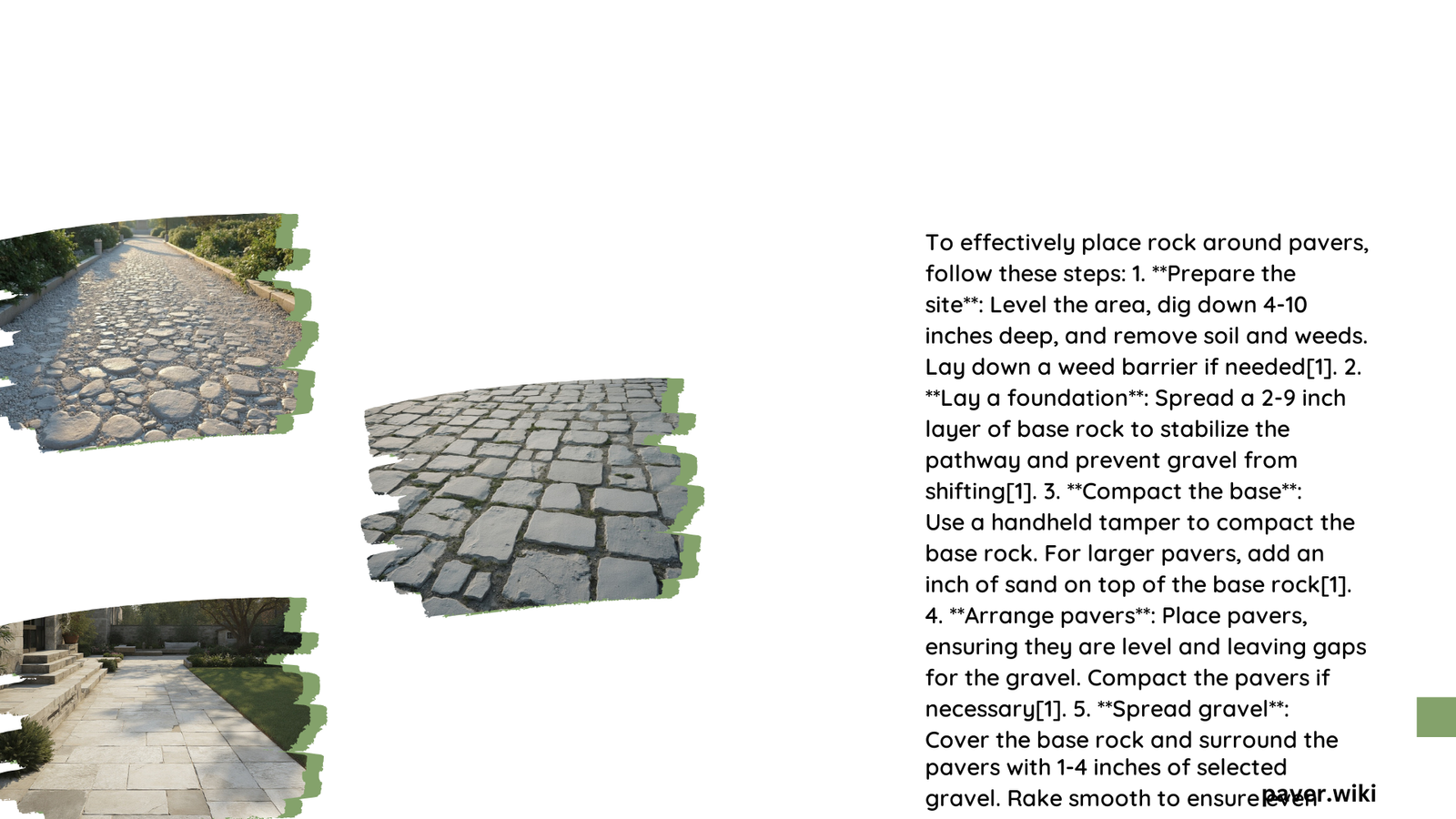Rock around pavers is a crucial element in hardscaping projects, providing stability, drainage, and aesthetic appeal. This comprehensive guide covers installation techniques, maintenance requirements, benefits, and potential challenges of using rock around pavers. From selecting the right type of rock to proper installation methods and long-term care, this article offers valuable insights for both DIY enthusiasts and professional landscapers.
What Are the Best Installation Techniques for Rock Around Pavers?
Selecting the Right Rock Type
The foundation of a successful paver installation begins with choosing the appropriate rock type. For the base layer, crushed rock or gravel is highly recommended due to its compaction properties and ability to provide a stable foundation. Specifically, 3/4 minus gravel with sharp edges and varying sizes is ideal for easy compaction and superior stability.
How Thick Should the Rock Layer Be?
The thickness of the base rock layer can vary depending on the intended use and soil conditions:
- For a typical patio: 2-4 inches of base rock
- For areas that will be driven on: Up to 9 inches
- For soft clay sub-base: Thicker layer may be necessary (6-9 inches)
What Tools and Materials Are Needed?
To properly install rock around pavers, you’ll need the following:
- Landscape fabric
- Base rock (crushed gravel)
- Sand
- Edging materials
- Compaction tools (hand tamper or plate compactor)
- Garden hose
What Are the Maintenance Requirements for Rock Around Pavers?

How Often Should Decorative Rock Be Replenished?
Decorative rock may need replenishment every few years, depending on:
- Usage
- Weather conditions
- Displacement or settling
What Are Effective Weed Control Methods?
To control weeds around pavers and rock:
- Apply pre-emergent herbicides
- Use landscape fabric as a barrier
- Regularly inspect and remove weeds manually
- Apply post-emergent herbicides when necessary
What Cleaning Techniques Should Be Used?
Maintain the appearance and functionality of rock around pavers with these cleaning methods:
- Regular sweeping to remove debris
- Raking to maintain even distribution
- Sealing pavers to prevent stains and vegetation growth
What Are the Benefits of Using Decorative Rock Around Pavers?
Is Decorative Rock Cost-Effective?
Decorative rock is generally a cost-effective option compared to other materials:
- Average cost: $1 to $3 per square foot
- Varies based on rock type and quality
- Long-lasting, reducing replacement frequency
How Does Rock Impact Drainage?
Rock around pavers offers significant drainage benefits:
- Reduces erosion
- Improves water permeation
- Prevents puddles and runoff
- Maintains soil stability
What Aesthetic Enhancements Does Rock Provide?
Decorative rock enhances the visual appeal of paver installations:
- Available in various colors and textures
- Creates contrast with pavers
- Adds natural element to hardscaping
- Allows for creative design patterns
What Are Potential Challenges in Rock Around Pavers Installation and Maintenance?
How to Address Accessibility Issues?
In tight spaces or areas with limited access:
- Use smaller tools for base rock installation
- Consider manual compaction methods
- Plan material delivery and staging carefully
How Do Soil Conditions Affect Installation?
Different soil types require specific approaches:
| Soil Type | Base Layer Thickness | Additional Considerations |
|---|---|---|
| Sandy | 2-4 inches | May require less compaction |
| Clay | 6-9 inches | Needs proper drainage measures |
| Loam | 4-6 inches | Generally ideal for paver installation |
What Weather Conditions Are Optimal for Installation?
For best results, consider these weather-related factors:
- Install during dry seasons
- Avoid extreme heat or cold
- Plan for proper drainage in rainy climates
- Allow for material expansion/contraction in varying temperatures
By following these guidelines and addressing potential challenges, you can successfully install and maintain rock around pavers, creating a durable and attractive hardscape feature for your outdoor space.
